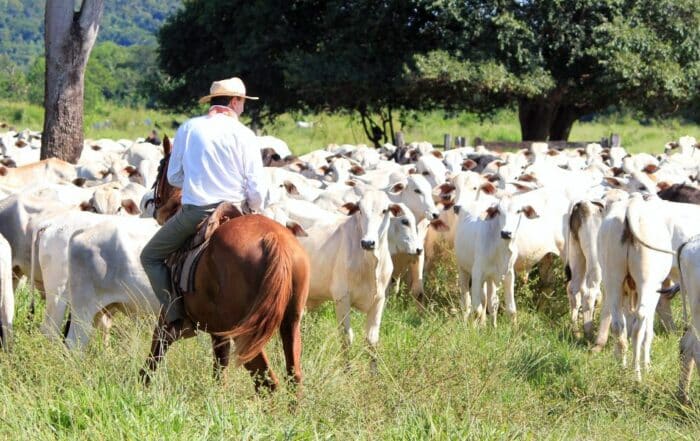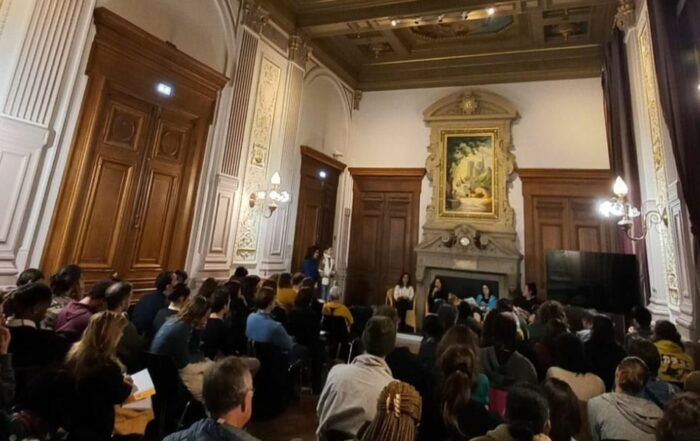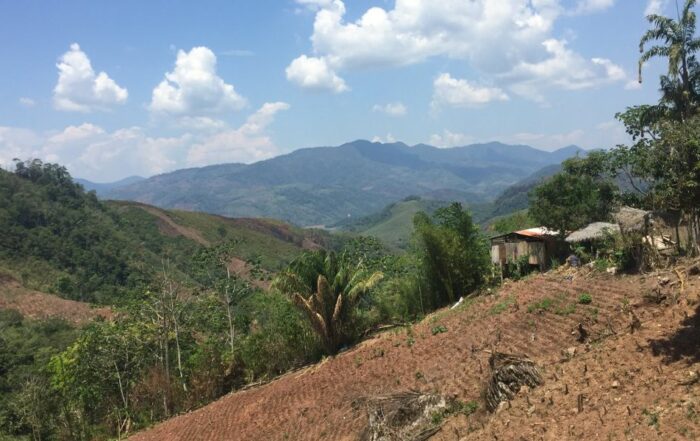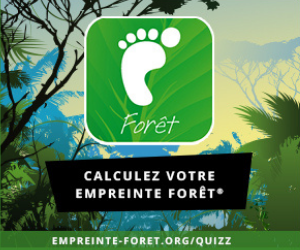Elena is a native of the highlands of Huánuco, although she has lived in Tingo María for several years now. She has resisted the period of internal armed conflict and has struggled to get ahead through agriculture, which can be seen in the management of her plots, where she takes advantage of every space on them, seeking productivity and diversification of her crops and income.
She has taken advantage of different products from her plots, ranging from wood to aromatic herbs, edible fruits and even medicine. For example, she has commercialized wood from two fast-growing forest species: “bolaina” (Guazuma crinita) and “chuncho pine” (Schizolobium amazonicum), used to make fruit crates and light constructions.
![[AGROCACAO]Huito en Anda_JUNIO2021_S.BASHI](https://envol-vert.org/wp-content/uploads/2021/07/AGROCACAOHuito-en-Anda_JUNIO2021_S.BASHI_-741x1024.jpg)
![[AGROCACAO]faune et flore parcelle Anda_julio2021](https://envol-vert.org/wp-content/uploads/2021/08/AGROCACAOfaune-et-flore-parcelle-Anda_julio2021.jpg)
From her farm, she also consumes and markets fruits such as the “cocona” (Solanum sessiliflorum), “the tomato of the Amazon”, with multiple health benefits and is considered one of the foods that helps to combat anemia; also the “taperiba” (Spondias dulcis), whose pulp, in addition to having a rich nutritional composition has antioxidant and bioprotective activity. The “sachaculantro” (Eryngium foetidum) which is an aromatic plant widely used by Amazonian families due to its qualities in gastronomy and its medicinal properties, the “bijao” (Calathea lutea), large leaves used to wrap the most consumed dish in the area; the Juane. The “jaguar” or “huito” (Genipa americana), a tree whose fruits are used to make natural dyes, soft drinks, and medicinal juices; the “sangre de grado” (Croton lechleri), the sap is used for its healing and antibacterial power. Finally, “sachapapa” (Dioscorea trifida) and “camu camu” (Mirciaria dubia) are other important crops that Elena grows on her plot. The former is rich in flavonoids, and the latter is important for its high amount of vitamin C (much more than oranges). All this diversity is used by Elena and her family and is distributed in an agroforestry system where the most important crop is cocoa.
During the interview and visit to her farm we had a nice sighting of “shanshos” (Opisthocomus hoazin), a wild bird with a peculiar erect crest and that usually lives near the watercourses, in this case we saw it in the reeds that protect part of the riverbank.
Now Elena, with her participation in the Envol Vert project, seeks to protect the banks of the river Anda. She recognizes the importance of protecting this resource for the services it provides to the surrounding population, in addition to the risks generated by the flooding of rivers without riparian defense, in times of rain.
![[AGROCACAO]Rio Anda_JUNIO2021_S.BASHI](https://envol-vert.org/wp-content/uploads/2021/07/AGROCACAORio-Anda_JUNIO2021_S.BASHI_-1024x768.jpg)
Elena’s plots are an excellent example of an agroforestry system both for the diversity of plants and uses as well as for the environmental services provided by her farm. A model for producers in the region.
Elena is a native of the highlands of Huánuco, although she has lived in Tingo María for several years now. She has resisted the period of internal armed conflict and has struggled to get ahead through agriculture, which can be seen in the management of her plots, where she takes advantage of every space on them, seeking productivity and diversification of her crops and income.
She has taken advantage of different products from her plots, ranging from wood to aromatic herbs, edible fruits and even medicine. For example, she has commercialized wood from two fast-growing forest species: “bolaina” (Guazuma crinita) and “chuncho pine” (Schizolobium amazonicum), used to make fruit crates and light constructions.
![[AGROCACAO]Huito en Anda_JUNIO2021_S.BASHI](https://envol-vert.org/wp-content/uploads/2021/07/AGROCACAOHuito-en-Anda_JUNIO2021_S.BASHI_-741x1024.jpg)
![[AGROCACAO]faune et flore parcelle Anda_julio2021](https://envol-vert.org/wp-content/uploads/2021/08/AGROCACAOfaune-et-flore-parcelle-Anda_julio2021.jpg)
From her farm, she also consumes and markets fruits such as the “cocona” (Solanum sessiliflorum), “the tomato of the Amazon”, with multiple health benefits and is considered one of the foods that helps to combat anemia; also the “taperiba” (Spondias dulcis), whose pulp, in addition to having a rich nutritional composition has antioxidant and bioprotective activity. The “sachaculantro” (Eryngium foetidum) which is an aromatic plant widely used by Amazonian families due to its qualities in gastronomy and its medicinal properties, the “bijao” (Calathea lutea), large leaves used to wrap the most consumed dish in the area; the Juane. The “jaguar” or “huito” (Genipa americana), a tree whose fruits are used to make natural dyes, soft drinks, and medicinal juices; the “sangre de grado” (Croton lechleri), the sap is used for its healing and antibacterial power. Finally, “sachapapa” (Dioscorea trifida) and “camu camu” (Mirciaria dubia) are other important crops that Elena grows on her plot. The former is rich in flavonoids, and the latter is important for its high amount of vitamin C (much more than oranges). All this diversity is used by Elena and her family and is distributed in an agroforestry system where the most important crop is cocoa.
During the interview and visit to her farm we had a nice sighting of “shanshos” (Opisthocomus hoazin), a wild bird with a peculiar erect crest and that usually lives near the watercourses, in this case we saw it in the reeds that protect part of the riverbank.
Now Elena, with her participation in the Envol Vert project, seeks to protect the banks of the river Anda. She recognizes the importance of protecting this resource for the services it provides to the surrounding population, in addition to the risks generated by the flooding of rivers without riparian defense, in times of rain.
![[AGROCACAO]Rio Anda_JUNIO2021_S.BASHI](https://envol-vert.org/wp-content/uploads/2021/07/AGROCACAORio-Anda_JUNIO2021_S.BASHI_-1024x768.jpg)
Elena’s plots are an excellent example of an agroforestry system both for the diversity of plants and uses as well as for the environmental services provided by her farm. A model for producers in the region.






